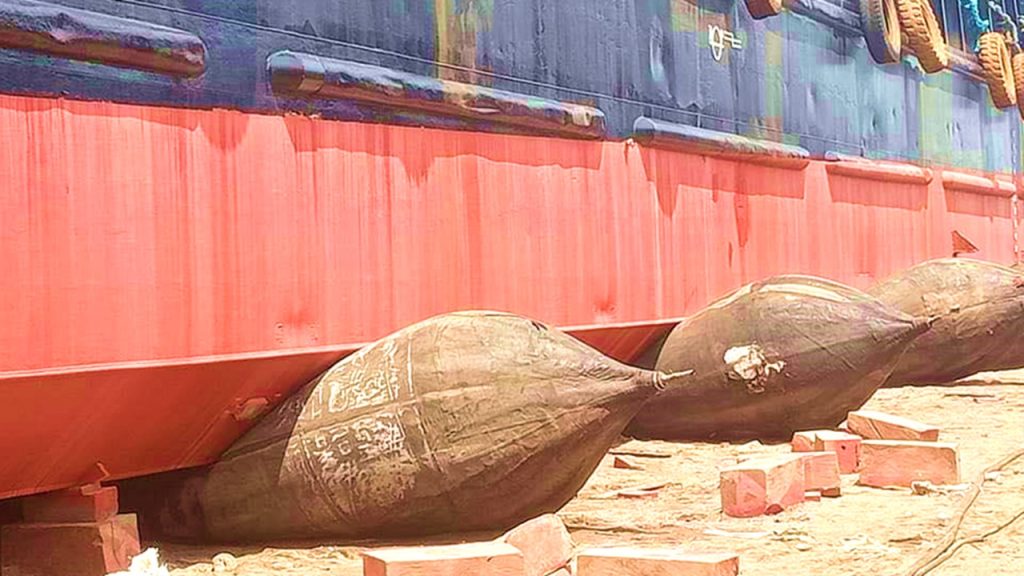When it comes to the maritime industry, three terms often float around: dry docking, ship upgrade, and shipbuilding in the Philippines. While they might sound similar at first glance, each one represents a distinct process that plays a crucial role in keeping vessels afloat and up-to-date. From enhancing performance and extending lifespan to constructing entirely new ships from scratch, understanding the differences between dry docking, ship upgrade, and shipbuilding is essential for anyone navigating through these deep waters. So grab your life vest as we dive into the depths of these fascinating marine practices.
Click here to learn about our dry docking and ship upgrade services in the Philippines
Click here to learn about our shipbuilding services in the Philippines.
Understanding the Basic Concepts of Ship Maintenance in the Philippines
Understanding the basic concepts of ship maintenance (Dry Docking, Ship Upgrade, and Shipbuilding) is crucial in the maritime industry, particularly in a country like the Philippines, where shipbuilding and repair have become major economic activities. One of the primary methods used to maintain ships is dry docking. Dry docking involves taking a vessel out of the water and placing it on a dry platform for inspection, maintenance, and repairs. This process allows for a thorough examination of the ship’s hull and other underwater components that are not accessible when it is submerged.
Contrary to dry docking, ship upgrades refer to enhancing or improving specific aspects or systems of a vessel while it remains operational. Upgrades may involve installing new equipment, modernizing technology or machinery, or making structural modifications based on evolving industry standards or regulations. Ship upgrades can significantly extend the lifespan of a vessel and improve its overall performance and efficiency. They enable shipowners to keep up with technological advancements in the industry while ensuring compliance with international safety standards.
While dry docking focuses on preserving and maintaining existing ships, shipbuilding entails constructing entirely new vessels from scratch. The Philippines has emerged as one of Asia’s leading destinations for shipbuilding due to factors such as low labor costs and skilled workforce availability. Shipbuilding provides opportunities for job creation in local communities and contributes to economic growth in the region.
Understanding these basic concepts – dry docking, ship upgrading, and shipbuilding – helps Filipino stakeholders navigate through various stages involved in maintaining ships effectively within the Philippine maritime sector.
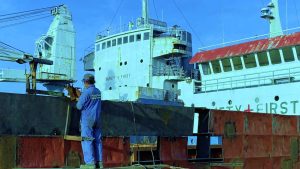
Dry Docking: Key Features and Benefits
Dry docking is a crucial process in the life cycle of a ship that offers numerous benefits in the Philippines. One key feature of dry docking is its ability to ensure proper maintenance and repair of vessels. During this process, ships are taken out of the water onto a dock where a range of tasks can be performed, including hull cleaning, painting, and inspection for any signs of damage or wear. This allows for timely repairs, preventing potential issues from worsening and ultimately leading to more extensive and costly repairs later on.
Furthermore, dry docking provides an opportunity to upgrade ships with new technologies and equipment. As maritime industry standards continue to evolve rapidly, it becomes essential for ship owners to keep their vessels up-to-date with the latest advancements. Dry docking serves as the ideal time to install new navigation systems, communication equipment or even upgrade engines for improved fuel efficiency. By taking advantage of this period when the ship is out of operation in dry dock facilities in the Philippines or elsewhere, owners can maximize their investment by ensuring their vessel remains competitive and compliant with industry regulations.
Apart from regular maintenance and upgrades, dry docking also presents an opportunity for shipbuilders to construct entirely new vessels from scratch. In addition to repair services available at dry docks across the Philippines, such as Subic Bay, Batangas, Cavite, Navotos, and Manila, these facilities can also serve as temporary construction sites for brand-new Filipino-owned ships.

Step-By-Step Process of Dry Docking
Dry docking in the Philippines is a crucial process in maintaining the integrity of ships, and it plays a significant role in the shipbuilding and repair industry. In Luzon, Visayas, and Mindanao, dry docking is carried out using a step-by-step approach to ensure the vessel’s safety and functionality. The process begins with preparing the ship for dry docking by removing all equipment, furnishings, and hazardous materials.
Once preparatory work is done, the ship enters a dry dock facility where water is pumped out to create a dry environment. The vessel is then carefully positioned within the dock using specialized equipment such as cranes and winches. This step requires precision to ensure that no part of the ship comes into contact with any structure within the dock.
Once properly positioned, inspections are conducted to identify any areas requiring repair or maintenance. Skilled technicians thoroughly examine all parts of the ship’s hull, propellers, rudder systems, machinery spaces, and other critical components. Any necessary repairs are executed promptly using appropriate materials and techniques.
The final stages involve testing repaired components to ensure they meet safety standards before refloating the vessel back into the water. Once successfully relaunched, final inspections are performed to verify that repairs have been completed satisfactorily.
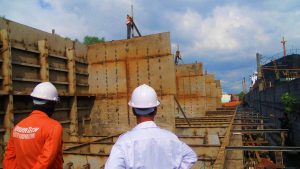
Ship Upgrade: Enhancing Vessel Capabilities and Performance
Ship upgrading in the Philippines has become a necessity in Cavite, Manila, Subic Bay, Cebu, and Navotas as vessel owners seek to enhance their capabilities and maximize performance. With advancements in technology, ship upgrades offer a wide range of possibilities to increase efficiency, reduce fuel consumption, and improve safety measures. One of the most significant advantages is the ability to incorporate innovative systems, such as smart navigation tools and automated machinery, which can streamline operations and optimize resources.
In addition to technological enhancements, ship upgrades also focus on improving the vessel’s structural integrity and overall aesthetic appeal. This includes reinforcing hulls to withstand harsh maritime conditions and renovating interiors to provide better living conditions for crew members. By investing in these upgrades, vessel owners not only ensure compliance with international standards but also create a competitive advantage by offering top-notch modern facilities that attract both clients and qualified seafarers.
Furthermore, ship upgrading plays an essential role in extending the lifespan of vessels. Instead of resorting to complete replacement or new construction projects, shipowners can opt for targeted upgrades that address specific needs while preserving existing assets. In doing so, they not only save costs but also contribute to sustainable practices by reducing waste production associated with new-build projects. Ultimately, ship upgrading offers a strategic approach for vessel owners in the Philippines looking to stay ahead in an increasingly dynamic maritime industry.
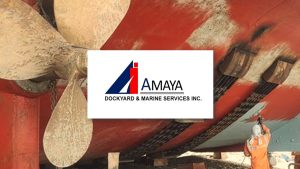
Step-By-Step Process of Ship Upgrades in the Philippines
Ship upgrades in the Philippines are an essential part of the maritime industry, ensuring that vessels meet safety standards and remain competitive in the ever-evolving market. In the Philippines, ship upgrades follow a step-by-step process that involves careful planning, assessment, and execution.
The first step in the process is to conduct a thorough inspection of the vessel to identify areas that require upgrading. This includes examining the ship’s structure, machinery, equipment, and systems. A comprehensive evaluation allows for a clear understanding of what needs to be updated or repaired.
Once the assessment is complete, a detailed plan is created outlining the necessary upgrades and repairs. This includes determining which areas need attention first and defining timelines for completing each task. The plan will also consider factors such as the availability of equipment and materials, as well as any necessary permits or certifications required for specific upgrades.
Execution of the ship upgrade plan involves coordinating various teams and contractors to carry out specific tasks. These can range from hull repairs and painting to electrical system updates or engine overhauls. Throughout this process, close coordination between all parties involved ensures smooth progress and timely completion.
Shipping companies in the Philippines benefit from strategically choosing local service providers who have expertise in ship upgrades as well as access to modern facilities equipped with specialized equipment. Collaborating with these experienced professionals helps ensure adherence to international standards while minimizing downtime during maintenance periods.
Ship upgrades in the Philippines follow a meticulous step-by-step process involving thorough inspections, detailed planning, and seamless execution through cooperation among relevant parties.

Shipbuilding: Constructing New Vessels From Scratch in the Philippines
Shipbuilding is a significant industry in the Philippines, with numerous shipyards scattered across the archipelago. The process of constructing new vessels from scratch requires intricate planning, skilled labor, and cutting-edge technology. One key advantage of shipbuilding in the Philippines is the cost-effectiveness it offers compared to other countries. With lower labor and material costs, shipyards in the Philippines can offer competitive prices without compromising on quality.
The shipbuilding process begins with design engineers who work closely with naval architects to create detailed plans for the vessel. These plans are then handed over to a team that specializes in steel fabrication and welding. Skilled workers carefully cut, shape, and weld steel plates according to the design specifications before assembling them into larger sections or blocks. The blocks are then joined together to form the hull of the vessel.
In addition to cost-efficiency, another advantage of building ships in the Philippines is its strategic location as an archipelagic nation surrounded by major shipping routes. This proximity makes it easier for shipbuilders and suppliers to transport materials, equipment, and finished vessels.
With a combination of skilled craftsmanship, advanced technology, and a favorable geographical position, shipbuilding in the Philippines continues to thrive as one of its vital industries. It plays a crucial role not only in boosting economic growth but also contributing to job creation and further establishing the country’s reputation as a key player in global marine transportation.

Step-By-Step Process of Shipbuilding in the Philippines
The shipbuilding industry in the Philippines has been steadily growing, with several world-renowned shipyards now operating in the country. The process of building a ship in the Philippines requires careful planning and meticulous execution. Here is a step-by-step breakdown of how it’s done.
First, the shipyard prepares the construction site by leveling the ground and creating a dry dock or graving dock. Once this is done, they begin laying down keel blocks to provide support for the hull during construction. Next, they start assembling steel plates and sections to form different sections of the ship, such as the bow, stern, and midship.
The assembled sections are then welded together to create larger modules called blocks. These blocks are lifted into place using cranes and secured onto the keel blocks. As more blocks are added, a recognizable shape starts to emerge. Once all structural components are complete, workers focus on installing mechanical systems like engines, piping systems, electrical wiring, and navigation equipment. Finally, painting is carried out followed by sea trials where various tests are conducted to ensure everything is working according to specifications.
Shipbuilding in the Philippines requires skilled laborers who possess expertise in welding techniques as well as an understanding of naval architecture principles. Additionally, strict adherence to safety standards ensures that these vessels withstand harsh conditions at sea while providing optimal performance for their intended purpose. With its efficient processes and dedication to quality production, it’s no wonder why Filipino-built ships have gained international recognition and demand in recent years.
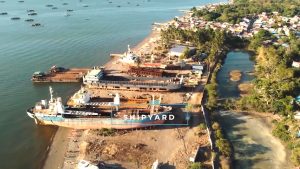
Comparison: Recognizing the Distinctions Between the Three Processes
It is essential to recognize the distinctions between dry docking, ship upgrade, and shipbuilding processes when it comes to maritime operations in the Philippines. Dry docking refers to the process of bringing a vessel out of the water for inspection, repair, or maintenance purposes. Ship upgrades involve modifying or enhancing a ship’s existing systems or functionalities to meet changing industry standards or improve performance. On the other hand, shipbuilding involves constructing a new vessel from scratch.
One key distinction between these processes lies in their objectives. While dry docking focuses on repairing and maintaining an existing ship, ship upgrades aim to enhance its capabilities without necessarily building an entirely new vessel. Shipbuilding, on the other hand, is centered around creating an entirely new watercraft.
Another important factor to consider is the time and cost implications associated with each process. Dry docking generally takes a relatively shorter time since it involves temporary removal from service for repairs or inspections. Ship upgrades in Tanza, Cavite, or Manila can vary in terms of duration depending on the complexity of modifications required; however, they tend to be more time-efficient compared to full-scale shipbuilding projects that may take several months or even years to complete.
Understanding these distinctions allows stakeholders in the maritime industry to make informed decisions based on their specific needs and requirements while adopting suitable strategies for the maintenance, improvement, or expansion of their fleets. By recognizing similarities and differences among these processes, companies can effectively allocate resources and manage timelines within their budgets while ensuring maximum operational efficiency throughout all stages of a vessel’s lifespan.
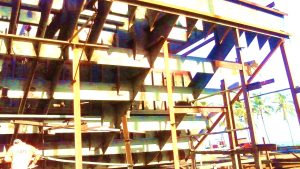
Factors to Consider When Choosing a Method Dry Docking, Ship Upgrade, Shipbuilding
When it comes to choosing a method for dry docking, ship upgrade, or shipbuilding, there are several factors that need to be considered. One of the primary factors is the specific needs and requirements of the vessel. This includes assessing the current condition of the ship and determining what upgrades or repairs are necessary. Additionally, the intended use of the vessel should be taken into account as different methods may be more suitable depending on whether it is primarily for commercial or military purposes.
Another important factor to consider is cost-effectiveness. Filipino shipowners must evaluate various options and determine which method offers the best value for their investment. This involves comparing prices from different dry docks or shipbuilders, as well as evaluating long-term maintenance costs. It’s crucial to consider not only upfront expenses but also potential future savings in terms of maintenance and efficiency gained from certain methods.
Furthermore, time constraints play a significant role in decision-making. Depending on project timelines and operational schedules, some methods may offer quicker turnaround times than others. In certain cases where expedited services are required due to urgent repairs or upgrades, opting for a specific method that can minimize downtime becomes crucial.
By carefully considering these key factors – vessel requirements, cost-effectiveness, and time constraints – shipowners can make informed decisions when choosing between dry docking, ship upgrade, or shipbuilding methods. Taking these aspects into account ensures that they select an approach that will not only meet their immediate goals but also provide lasting benefits in terms of performance efficiency and sustainability.

Are You Looking for the Best Dry Docking, Ship Upgrade, Shipbuilding in the Philippines?
When it comes to dry docking, ship upgrade, and shipbuilding services in the Philippines, Amaya Dockyard & Marine Services Inc. (ADMSI) stands out as one of the best options available. With years of experience in the industry, our team of Filipino engineers and maritime experts is dedicated to providing cost-effective solutions for our clients. Whether you are looking to repair and maintain your vessel or undertake a complete upgrade or new build project, ADMSI has got you covered.
- Email us: info@amayadockyard.com
- Call our 24-hour hotline: +63 917 633 0479
- Viber: +63 917 633 0479
- WhatsApp: +63 917 633 0479
- Facebook Messenger: Click here
- Click here to inquire
What sets us apart from others in the market is our commitment to quality and efficiency. Our dry docking facilities are state-of-the-art and equipped with modern technology to ensure that every project is completed to international standards. Our team adheres strictly to safety regulations and implements innovative techniques that allow for quicker turnaround times without compromising on quality. At Amaya Dockyard & Marine Services Inc., we recognize the importance of maintaining schedules and minimizing downtime for our clients.
Moreover, ADMSI takes pride in its ability to offer customized solutions tailored specifically to meet each client’s unique requirements. No two vessels are identical, and we understand the importance of providing individualized attention for each project they undertake. This level of personalization ensures that all aspects of a dry docking, ship upgrade, or shipbuilding project are carefully considered, leading to successful outcomes that exceed expectations.
Takeaway: Dry Docking, Ship Upgrade, and Shipbuilding in the Philippines
When it comes to the maintenance and enhancement of a ship, the decision between dry docking, ship upgrade, or shipbuilding is crucial. Each approach offers distinct advantages and considerations that must align with the specific needs of your vessel.
Dry docking in Cavite, Cebu, Manila, Navotas, Zambales, or Davao is an excellent choice when it comes to addressing structural repairs or performing routine inspections. Taking the ship out of the water allows for a comprehensive assessment of its condition without any hindrance or obstruction. On the other hand, if your aim is to modernize and improve specific aspects of your ship’s functionality, a ship upgrade might be the best approach. Upgrades can range from installing advanced navigation systems to incorporating eco-friendly features that comply with environmental regulations. These enhancements not only boost efficiency but also ensure compliance with industry standards.
Meanwhile, for those looking for an entirely new vessel or expanding their fleet altogether, shipbuilding presents an exciting opportunity. Building a new ship in Tanza, Cavite, from scratch allows you to customize every detail to suit your specific requirements. From choosing manufacturing techniques and materials to incorporating cutting-edge technology and design concepts, there are endless possibilities in terms of innovation and personalization.
Ultimately, each approach has its merits depending on what you aim to achieve with your ships’ maintenance or growth strategy: dry docking ensures safety by detecting any potential hull issues; upgrading enhances performance and meets regulatory demands while building anew provides unbridled flexibility for customization in every aspect.
Experience top-notch shipbuilding services in the Philippines – from dry docking to ship upgrades. Sail confidently with our skilled team by your side! Choose Amaya Dockyard & Marine Services Inc.

